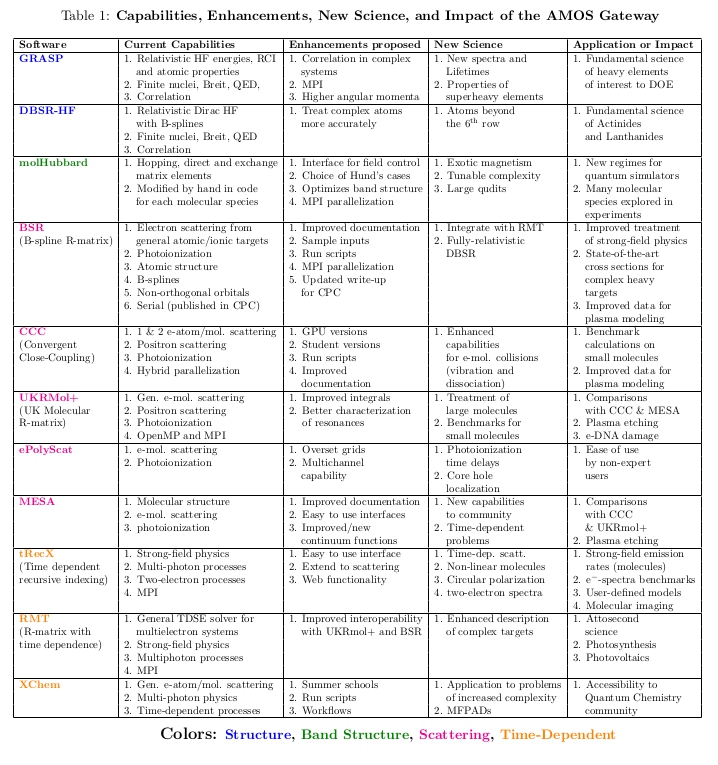About the AMOS Gateway
The idea for the AMOS Gateway was initiated at a workshop at the Institute for Theoretical Atomic and Molecular Physics (ITAMP) held at the Harvard-Smithsonian and organized by Schneider, in May of 2018. The focus of the workshop was to examine the requirements and to then suggest a process for developing robust and flexible software in AMOS. A subset of the attendees felt the time was ripe to bring together the AMOS community to work collectively to make their codes available and easier to use by the partners and eventually the AMOS community at large. By necessity, a project such as this requires the developers to work on issues of portability, documentation, ease of input, as well as making sure the codes can run on a variety of architectures. Doing this via the Science Gateways arm of the NSF XSEDE project seemed a natural avenue. We applied to the program for a startup award, which was granted, and began our efforts in earnest in July of 2018.
A second workshop was held at NIST in October, 2019 where scientists from outside the immediate collaboration were invited to attend.
After some typical birthpains, the collaboration grew and applied to the NSF CSSI program for support which was granted in July of 2023.
AMOS Gateway is an online portal that hosts a suite of codes being developed by the AMOS community to study a variety of problems involving the time-independent and time-dependent Schrödinger equation for multi-electron systems and for some applications involving the DIrac equation. They include the calculation of spectra, lifetimes and transition rates in bound states, cross sections for electron scattering and photoionization from atoms and molecules and the interaction of strong, time-dependent electromagnetic fields with these systems. Recently we have added some new capabilities to the gateway and eventually we hope to include codes to calculate cross sections for the vibration and rotational excitation of heavy particle systems as well as reactive collision. Many of these processes are of importance in astrophysics, fusion research, lighting, and the etching of silicon for computer chip production.
The table below contains a summary of the current status of the project. The user can navigate to descriptions of the individual tools to get many more details.
